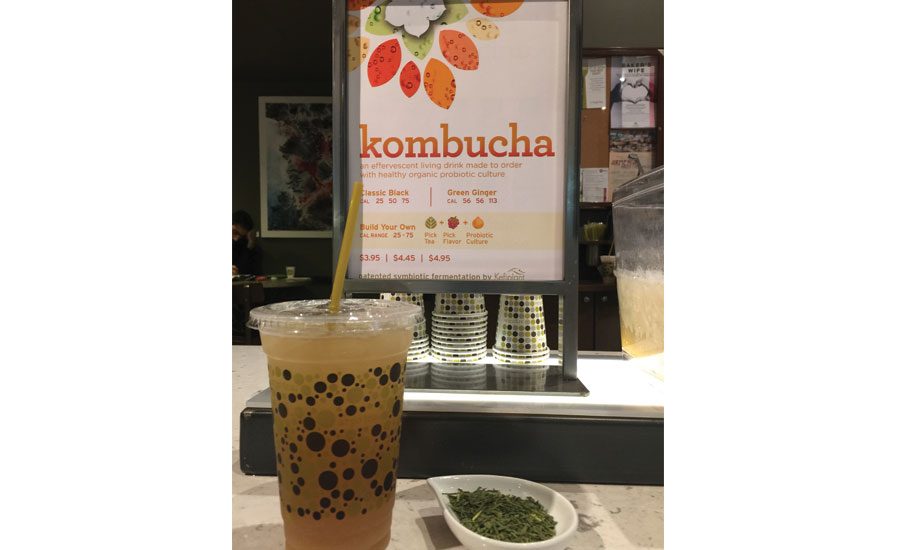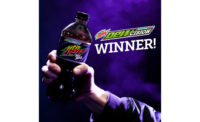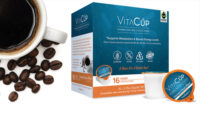The majority of consumers do not plan on changing their dining out behaviors this year; on top of that, the entire restaurant industry is projected to grow, Chicago-based Mintel explains in its January report “Dining Out: A 2016 Look Ahead.” Although some consumers will reduce their spending while dining out, the projected growth is in line with the growth predicted by David Henkes, Chicago-based Technomic’s advisory group senior principal.
“We’re forecasting a similar year next year as this year, 4.5 to 5 percent growth on a dollar basis,” he says. “And you’re probably looking at 2 to 2.5 percent real growth this year and probably even going forward a little bit.”
Arushi Thakur, analyst for London-based Technavio, also notes an approximately 5 percent growth for the channel. "The foodservice market in the U.S. is expected to grow 5.09 percent during the forecast period," Thakur says. "According to studies, the number of quick service restaurant (QSR) franchises is the U.S. was estimated to be more than 150,000. This is a clear indication that the demand for foodservice establishments is on a constant rise."
Limited-service restaurants (LSRs) are driving the growth of the channel, according to Mintel. “The market share of LSRs will likely increase given the growth in the fast-casual category,” the report states. “… While some consumers do plan on spending less when dining out, overall, the restaurant industry as a whole has been experiencing (year-over-year) [YOY] growth and is projected to grow 21 percent by 2020.”
Technomic’s Henkes also notes the impact that fast-casual establishments are having on the channel. “Fast casual is driving everything,” he says.
When it comes to beverages, premiumization and health and wellness are important aspects for success in today’s foodservice market, Henkes adds. “[W]hen you start to take that down to a beverage perspective, we see things like premiumization, which really correlates with what consumers are asking for — better-quality experiences [and] better-quality beverages,” he says.
As consumers have redefined healthy, foodservice operators have had to readjust their offerings to meet a new demand, Henkes says. “Health and wellness isn’t necessarily low calorie, low fat anymore,” he says. “It’s food and beverages with a story, and ‘do I know where it’s coming from?’, ‘are all of the ingredients transparent?’, and ‘is it all natural?’ Sort of a whole different definition now for healthy that translates into beverage use as well in terms of products that aren’t necessarily low fat or low calorie, but are more functional in nature, and that functionality leads to a perception of health and wellness.”
However, the Mintel report notes that customization also has influenced the growth in fast-casual restaurants. “The rise of fast casuals was due in part to the amount of customization these restaurants provided customers,” the report states. “Customization is one of the most important restaurant factors valued by millennials and boomers almost equally.”
What’s on the menu?
Despite a promising future for foodservice, the performance of beverages within the channel could lag behind, according to Mintel. “Many consumers view beverages as too expensive when dining out and some may skip a drink in [an] order to cut back on the check size,” the January report states. “The price-points, coupled with the negative health perceptions surrounding [carbonated soft drinks](CSDs), threaten to reduce the amount consumers spend when they dine out.
“Restaurants can increase beverage sales by offering more specials or beverage-specific coupons,” it continues. “Also, although craft sodas and handmade drinks are more expensive than traditional drinks, they do tap into the consumer trends of ordering natural and house-made items, and shift the focus from price to value.”
Technomic’s Henkes also notes that more premium beverage offerings, like alternative drinks, iced coffees and smoothies, can allow an operator to charge higher prices and increase check averages. Many of these offerings can appeal to better-for-you trends as well.
David Morris, consultant at Rockville, Md.-based Packaged Facts, also notes the importance of premium offerings. “[E]very conversion from a regular/standard to specialty/premium offering translates to more revenue per ounce,” he says. “This is especially important in foodservice because beverage margins are generally higher than food margins, helping [to] drive profits.”
He also notes that these beverages offer an added value.
Technavio's Thakur echoes similar sentiments. "Foodservice outlets promote premium beverage options to increase sales margin," Thakur explains. "Beverage sales account for only 15-20 percent of the total sales [in] the foodservice channel, however they account for more than 50 percent of total profits. Because of the high margins that can be accrued from beverage sales, foodservice operators are exploring a number of avenues to entice beverage purchases."
Thakur adds that sales of premium coffee beverages will increase due to enhanced breakfast platforms.
Limited-time (LTO) and seasonal offerings also can boost sales, Morris says. “Tying beverage offerings to [a] seasonal change provides myriad ways to connect that beverage to something deeper and more meaningful to a consumer,” he says. “... LTO brings variety that is the consumer’s spice of life — it can keep them guessing, and it helps operators experiment and stay fresh.”
Summertime typically offers tremendous opportunity for beverage sales via LTOs and seasonal offerings. For example, Tampa, Fla.-based Burger21 launched the Marley Meltdown Burger and a Toasted Coconut Dream Shake in May, hitting on the food-and-beverage pairing trend while offering seasonal frozen beverage.
Beverage-centric foodservice locations also capitalized on the season. Jamba Juice Co., Emeryville, Calif., added a new line of Island Getaway Smoothies to its menu this summer. Available for a limited time, the smoothies were offered in two flavors: Gotta Guava and Tropical Sunburst.
Additionally, Chicago-based Argo Tea collaborated with Quebec-based Kefiplant to offer custom kombucha beverages from May to June. Made-to-order, consumers could choose either Classic Black Tea or Green Tea Ginger, which then was blended with kombucha by Kefiplant, soda water and a flavor shot, the company says.
According to Thakur, seasonal beverages
Coming soon to a menu near you
Looking ahead, Technomic’s Henkes highlights a few beverage trends that potentially could impact foodservice in the future, including the growth of smoothies and cold-brew coffee. “Cold-brew coffee is obviously something Starbucks is getting into now and we’ve been tracking it on menus,” he says. “There’s really low penetration, but that’s something we’re keeping an eye on, and consumers will tell you it’s better, sweeter-flavored coffee when it’s cold brewed.”
In line with Mintel’s report, Henkes notes that to save on their dining-out expenses, many consumers have begun to choose water while dining out. “Water is still a big part of the challenge,” he says. “ … With the challenges in the economy, a lot of consumers switch to water, and so operators are trying to figure out how to premiumize their water offerings to get something incremental for water.”
He says offering higher-end bottled waters or water taps that dispense both sparkling and still water might offer a solution.
For example, Miami Beach, Fla.-based Vero Water offers an opportunity for operators to capitalize on water with its recent launch of Vero+4, a high-capacity dispenser of luxury still and sparkling water, the company says. Through the program, operators can offer unlimited bottles of still or sparkling Vero for a set charge for each guest, it adds.
Online foodservice delivery services, like Grub Hub and Uber Eats, also are challenging industry operators, especially when it comes to beverage occasions, according to Technomic’s Henkes.
“One of the challenges when you talk about beverage [in regards to online delivery services] … is that as the take-out and delivery options grow … to a large degree you’re losing the beverage occasion,” he says. Henkes notes that because consumers most likely have beverages in their home, so online services have a much lower incidence of beverage than dine-in occasions.
“[T]hat is certainly a big challenge on a macro basis going forward,” he says. “This growth of delivery and the delivery evolution are certainly things that are transforming slowly, but we believe are going to transform the industry, and as a result the beverage industry needs to figure out better ways to either capture that beverage occasion or figure out how to replace some of that lost volume.” BI





